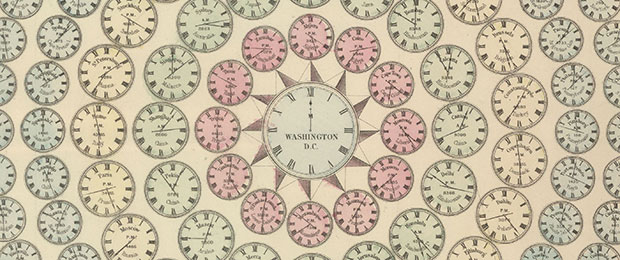"data-driven design" entries

4 reasons why microservices resonate
Microservices optimize evolutionary change at a granular level.

We just finished the first O’Reilly Software Architecture Conference and the overwhelming most popular topic was microservices. Why all the hype about an architectural style?
Microservices are the first post-DevOps revolution architecture.
The DevOps revolution highlighted how much inadvertent friction an outdated operations mindset can cause, starting the move towards automating away manual tasks. By automating chores like machine provisioning and deployments, it suddenly became cheap to make changes that used to be expensive. Some architects properly viewed this new capability as a super power, and built architectures that fully embraced the operational aspects of their design. The Microservice architectural style prioritizes operational concerns as one of the key aspects of the architecture.
Microservice architectures borrow a design aesthetic from Domain Driven Design called the Bounded Context. A bounded context encapsulates all internal details of that domain and has explicit integration points with other bounded contexts. Microservice architectures reify the logical DDD bounded context into physical architecture. For example, it is common in microservice architectures for services that must persist data to own their database: members of the service team handle provisioning, backups, schema, migration, etc. In other words, in microservice architectures, the bounded context is also a physical context. But that also means that this service implementation isn’t coupled to any other team’s implementation, clearing the path for independent evolution. I recently published some writing about the recent realization that architecture is abstract until operationalized. In other words, until you have deployed an architecture and upgraded parts of it, you don’t fully understand it.

A human-centered approach to data-driven design
The O'Reilly Radar Podcast: Arianna McClain on humanizing data-driven design, and Dirk Knemeyer on design in emerging tech.
This week on the O’Reilly Radar Podcast, O’Reilly’s Roger Magoulas talks with Arianna McClain, a senior hybrid design researcher at IDEO, about storytelling through data; the interdependent nature of qualitative and quantitative data; and the human-centered, data-driven design approach at IDEO.
In their interview, Magoulas noted that in our research at O’Reilly, we’ve been talking a lot about the importance of the social science design element in getting the most out of data. McClain emphasized the importance of storytelling through data at IDEO and described IDEO’s human-centered approach to data-driven design:
“IDEO really believes in staying and remaining human-centered throughout the data journey. Starting off with, how might we measure something, how might we measure a behavior. We don’t sit in a room and come up with an algorithm or come up with a question. We start by talking to people. … We’re trying to build measures and survey questions to understand at scale how people make decisions. … IDEO remains data-driven to how we analyze and synthesize our findings. When we’re given a large data set, we don’t analyze it and write a report and give it to people and say, ‘This is the direction we think you should go.’
“Instead, we look at segmentations in the data, and stories in the data, and how the data clusters. Then we go back, and we try to find people who are representative of that cluster or that segmentation. The segmentations, again, are not based on demographic variables. They are based on needs and insights that we heard in our qualitative research. … What we’ve recognized is that something that seems so clear in the analysis is often very nuanced, and it can inform our design.”

The intersection of data and design is equal parts art and science
Data-informed design is a framework to hone understanding of customer behavior and align teams with larger business goals.
Editor’s note: this is an excerpt from our forthcoming book Designing with Data; it is part of a free curated collection of chapters from the O’Reilly Design library — download a free copy of the Experience Design ebook here.
The phrase “data driven” has long been part of buzzword-bingo card sets. It’s been heard in the halls of the web analytics conference eMetrics for more than a decade, with countless sessions aimed at teaching audience members how to turn their organizations into data-driven businesses.When spoken of in a positive light, the phrase data driven conjures visions of organizations with endless streams of silver-bullet reports — you know the ones: they’re generally entitled something to the effect of “This Chart Will Help Us Fix Everything” and show how a surprise change can lead to a quadrillion increase in revenue along with world peace.
When spoken of in a negative light, the term is thrown around as a descriptor of Orwellian organizations with panopticon-level data collection methods, with management imprisoned by relentless reporting, leaving no room for real innovation.
Evan Williams, founder of Blogger, Twitter, and Medium, made an apt comment about being data driven:
I see this mentality that I think is common, especially in Silicon Valley with engineer-driven start-ups who think they can test their way to success. They don’t acknowledge the dip. And with really hard problems, you don’t see market success right away. You have to be willing to go through the dark forest and believe that there’s something down there worth fighting the dragons for, because if you don’t, you’ll never do anything good. I think it’s kind of problematic how data-driven some companies are today, as crazy as that sounds.”

Big questions, good data, smart designs
Spotify’s Rochelle King on designing with data for optimal user experiences.
Download a free copy of “The New Design Fundamentals” ebook, a curated collection of chapters from our Design library. Rochelle King is the co-author of the forthcoming book “Designing with Data,” which is included in the compilation. King also is co-chairing our newly announced Design Conference — the call for proposals is open; the deadline for submission is July 20, 2015.
The best designers possess empathy for their users — and data is key to gaining this kind of understanding. I recently sat down with Rochelle King, vice president of global design and UX at Spotify, to talk about data, design, and user experience. King stressed the importance of understanding what the numbers in the data mean — and on staying focused on the real endgame:
“I think a common misconception or misstep that happens is people just look at the numbers and they forget that they’re actually representing human behavior. That’s a dangerous cycle you can fall into — you can start to optimize the numbers for the sake of optimizing numbers rather than thinking about building an experience that helps to craft the best experiences possible. You start to focus on improving numbers rather than on making a great experience.”
The benefits of data-informed decision-making are clear, but the process is far from easy. Read more…

